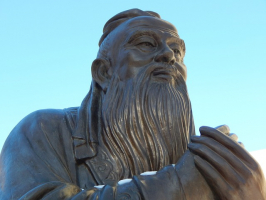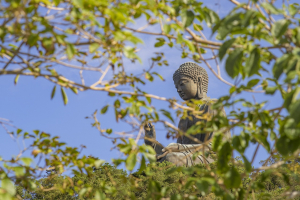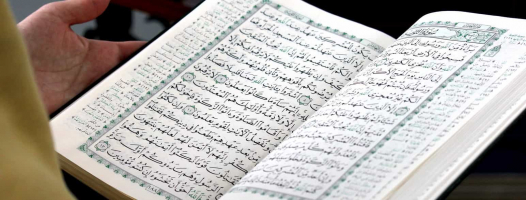Top 9 Fascinating Things About Sikhism You Should Know
Sikhism is a separate religious tradition with its own particular traits, such as founders, scripture, worship, rites, and traditions. Here are the ... read more...Fascinating Things About Sikhism You Should Know.
-
Sikhism, referring to the Sikh religion, is an ethical monotheism that combines parts of Hinduism and Islam and believes in equality and service to others. Guru Nanak (1469–1539), a mystic who thought that God transcended theological divides, founded it. Sikhism is based on Guru Nanak's teachings as well as those of nine other gurus who came after him.
The term "Sikh" implies "learned" or "seeker of truth". Sikhism promotes equality, social justice, humanitarian service, and tolerance for other religions. The central teaching of Sikhism is to practice spiritual devotion and reverence for God at all times while also practicing the qualities of honesty, compassion, humility, and charity in daily life. Sikhism rejects caste and class hierarchies and places a premium on humanitarian service.
With around 25 million Sikhs worldwide, Sikhism is the fifth-largest religion in the world. While India is home to 80% of the world's Sikhs, the majority of whom live in the state of Punjab, there are also considerable numbers in Canada, the United Kingdom, the United States, Australia, New Zealand, East Africa, Malaysia, Singapore, and Thailand. It is believed that there are between 700,000 and 900,000 Sikhs in the United Kingdom.
Sikhs make up around 14% of all people of Indian heritage who have moved to Australia. According to the 2006 Census, there were 26,429 Sikhs in Australia, with New South Wales having the most. The Northern Territory has about 15 Sikh families.
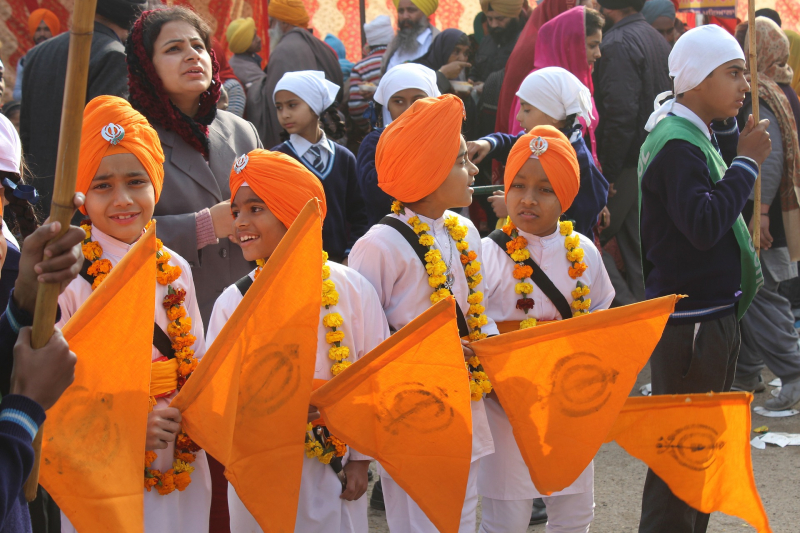
Image by Jeevan Singla on Pixabay 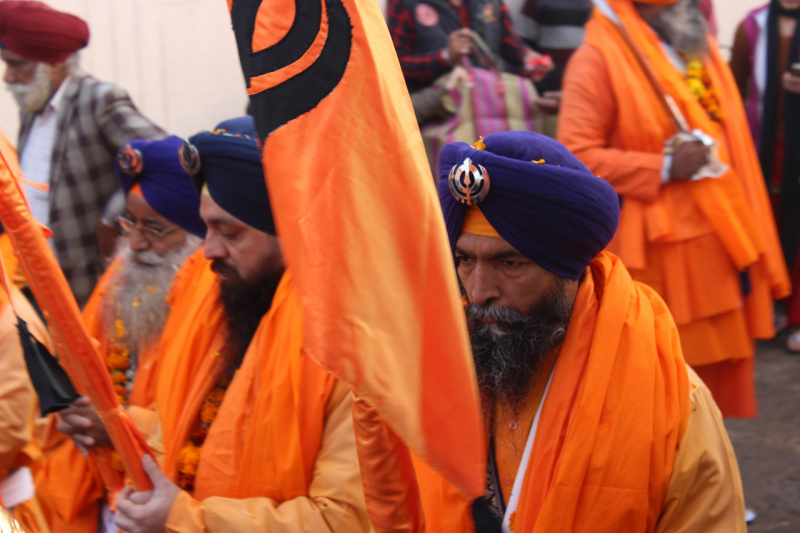
Image by Jeevan Singla on Pixabay -
Guru Nanak, the founder of the Sikh tradition, was born in 1469 CE in Punjab, South Asia. He led a life of spirituality, service, and honesty, and the people who began to follow his teachings were known as Sikhs. The Sikh community grew under the tutelage of eleven religious leaders known as gurus, the last of whom died in 1708 CE.
Today, the community's authority is held by two entities: the Sikh holy text known as the Guru Granth Sahib and the community of initiated Sikhs known as the Guru Khalsa Panth.
The Guru Granth Sahib is the Sikh text that maintains ultimate authority in the Sikh tradition. The content was compiled by the Gurus themselves and incorporates their musical writings. The Gurus also integrated works from other spiritually exalted people who lived in South Asia and shared a similar worldview.
The subjects of the scriptural pieces are primarily concerned with the nature of heavenly experience and the actions one can take to obtain it. The entire text is written in verse poetry, and the vast majority of it is set to music.
The Guru Granth Sahib is regarded by Sikhs as a revealed text, and it is fundamental to Sikh devotional and ceremonial life. The comparatively huge scripture is the focal point of Sikh devotional settings.
The gurdwara is modeled after an imperial court in early modern South Asia, which serves as a reminder to worshippers of the gurdwara's sovereign and authoritative standing. A volunteer attends to the Guru Granth Sahib, which is placed on a throne.
The scripture is also incorporated into all Sikh life rites in some fashion. At a Sikh wedding, for example, the bride and groom walk around the Guru Granth Sahib several times to symbolize, among other things, the importance of the teachings in their own lives.
Each of the ten Sikh Gurus labored to foster the Sikh community, and over time, the community developed its own sense of responsibility. It progressed from having little impact during Guru Nanak's reign to being consulted by the Sikh Gurus on major decision-making occasions.
The community's power peaked in 1699 CE, when Guru Gobind Singh, the tenth Sikh Guru, summoned all Sikhs to Anandpur on Vaisakhi, the day that traditionally commemorated the harvest festival.
The society of initiates was formally institutionalized and given authority on this day. This society, which became known as the Guru Khalsa Panth, provided an official organization for people who adhered to the Sikh way of life. Accepting initiation (amrit) and embracing a couple of the basic principles stated in the Sikh code of conduct (Rehat Maryada) reflect this commitment. The prescriptions in this document require initiated Sikhs to engage in regular prayers and wear five articles of faith, among other things.
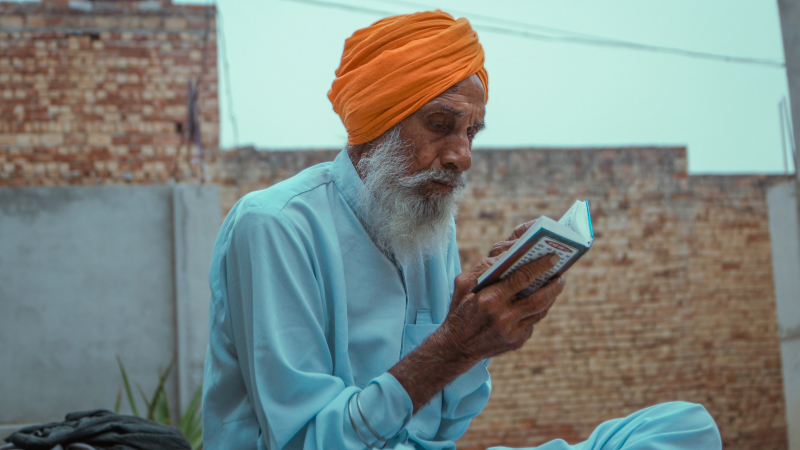
Image by sandeep gill on Unsplash 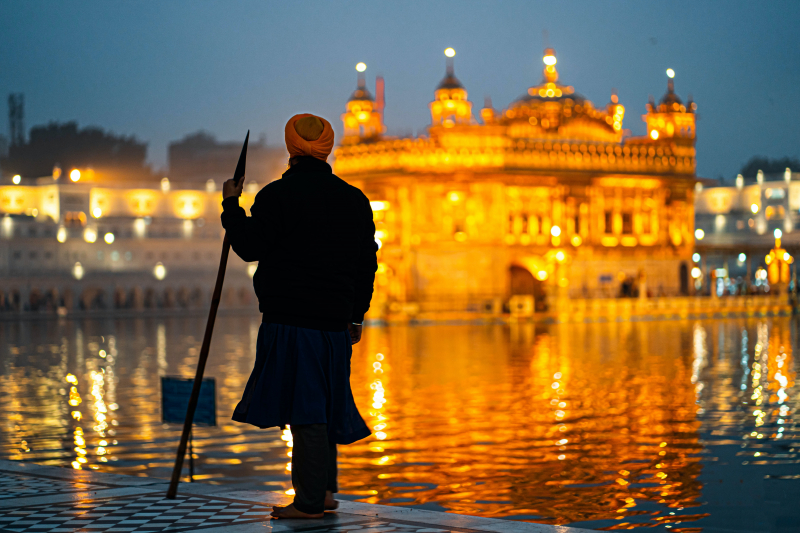
Image by Dhally Romy on Pexels -
To begin with the beginning, Guru Nanak, the founder of the Sikh tradition, was born in 1469 in the Punjab region of South Asia, which is now divided between Pakistan and the northwestern section of India. The majority of the global Sikh community still lives in Punjab, on the Indian side of the border.
His father, Mehta Kalu, worked for the government as a patwari, or land revenue accountant. Guru's mother's name was Mata Tripta, and he had one older sister named Bibi Nanki. Bibi Nanki recognized the light of God in him from his boyhood, but she never told anyone. She is recognized as Guru Nanak's first disciple.
Guru Nanak was disillusioned by the social injustices and religious hypocrisies he witnessed around him from an early age. He thought that the entire planet was created and inhabited by a single divine entity. God, he believed, was not separate from the universe and watching from afar but was fully present in all aspects of creation. As a result, he declared that all people are equally divine and deserve to be treated as such.
Guru Nanak established organizations and religious rituals to advance his vision of divine oneness and social equality. He constructed community centers and places of worship, composed his own biblical compositions, and formalized a system of leadership (gurus) to carry on his vision.As a result, the Sikh viewpoint rejects any social divisions that cause injustice, such as gender, ethnicity, religion, and caste, which is the prevalent social hierarchical system in South Asia. Serving the world is an organic extension of Sikh prayer and worship. Sikhs refer to this devotional service as "seva," and it is an important aspect of their religion.
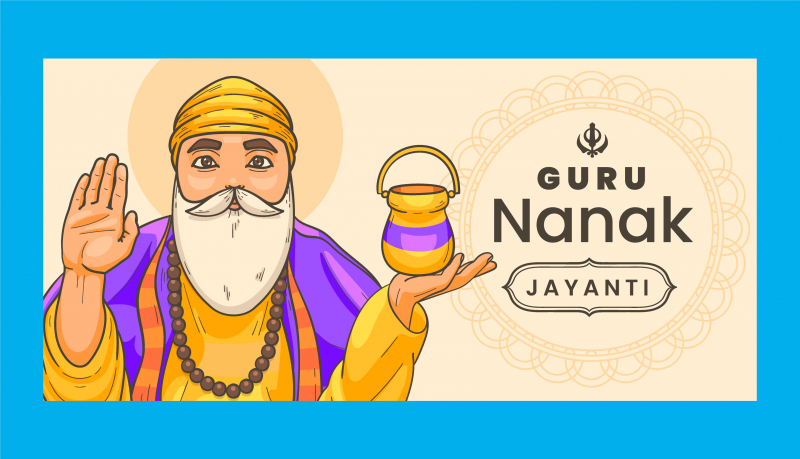
Image by Freepik 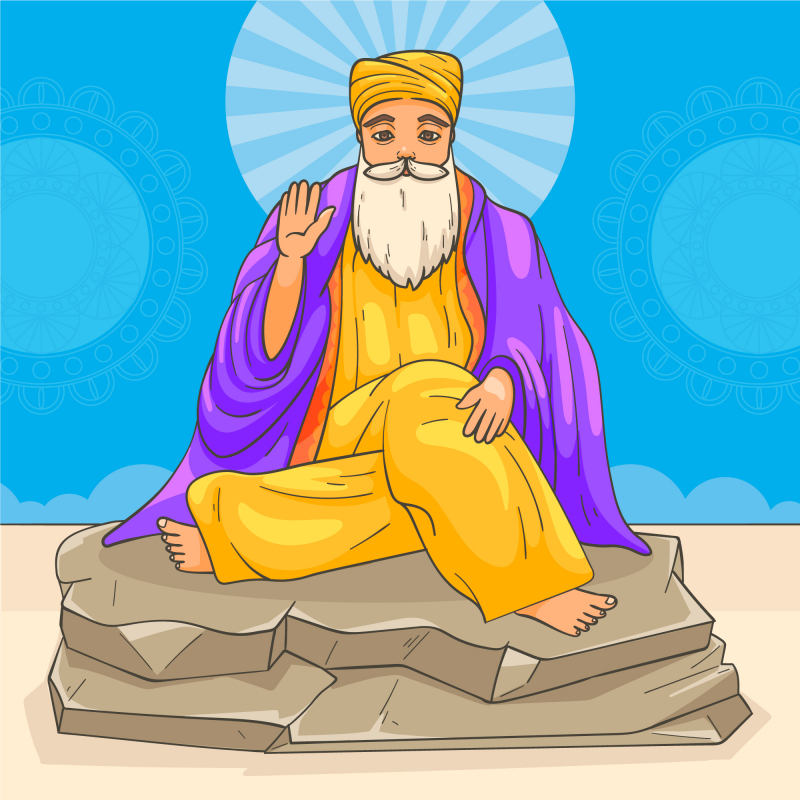
Image by Freepik -
The essential beliefs aid in understanding the three everyday principles of Sikhism: true life, service to humanity, and devotion to God. In particular:
- Va Chakk: To share with others, to assist those in need, and to be a part of a community Sikhism is built on a spirit of giving, sharing, and caring for one another.
- Kirat Kar: Earning a living honestly, without exploitation or deception, and always expressing the truth
- Naam Japna: To live a decent and humble life, one should meditate on God's name.
Sikhism's faith is a monotheistic religion, which means that Sikhs worship one divine being who created this world and lives within it. The concept of divine presence leads to the conviction that the divine is equally present in all persons and, as a result, that every human being is equal in God's eyes.
There are no theological grounds for discriminating against people based on their social identities, whether gender, caste, ethnicity, or other. For example, because Sikhs believe that all people are equal, there are no clergy or priests in the Sikh community; any person can directly communicate with the Creator, and all positions of leadership and power in Sikh religious and political life are accessible to persons of all backgrounds.
Sikhs strive to acknowledge the divine presence in all parts of life, and this constant acknowledgement aids in the development of a loving self. Finding love within one's own lives is both the end goal and the means to that end in Sikhism; recognizing divine love is the ultimate aim, and practicing love with intention and spirit is the process for accomplishing that objective. In this way, the complementary characteristics of oneness and love are key Sikh theological tenets.
Serving society is a natural outcome of understanding the oneness of the planet and practicing love. Service is a means for Sikhs to offer gratitude to the Divine. Service is prayer in action. The concept of love-inspired service is known as seva, and it is an important aspect of Sikh tradition.All Sikhs are required to assist humanity while also developing their spirituality. The idea is that every Sikh should want to be a sant-ssipahi, a saint-ssoldier, someone who is internally focused while simultaneously contributing to the world around them.
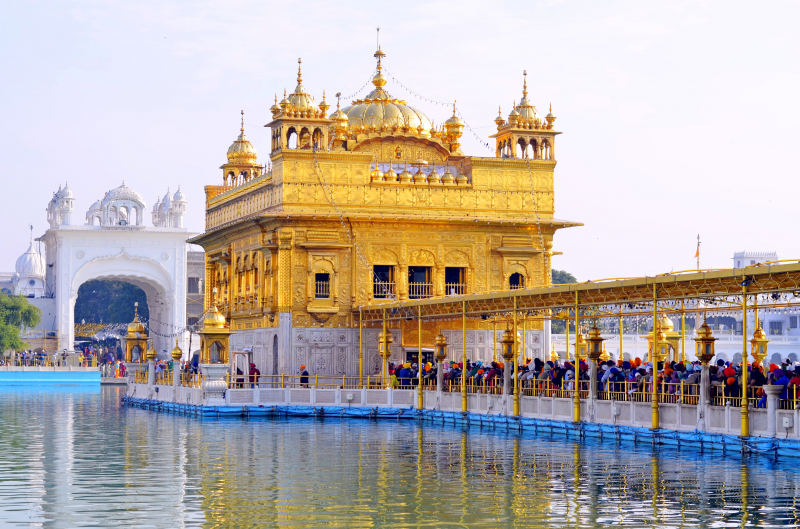
Image by Laurentiu Morariu on Unsplash 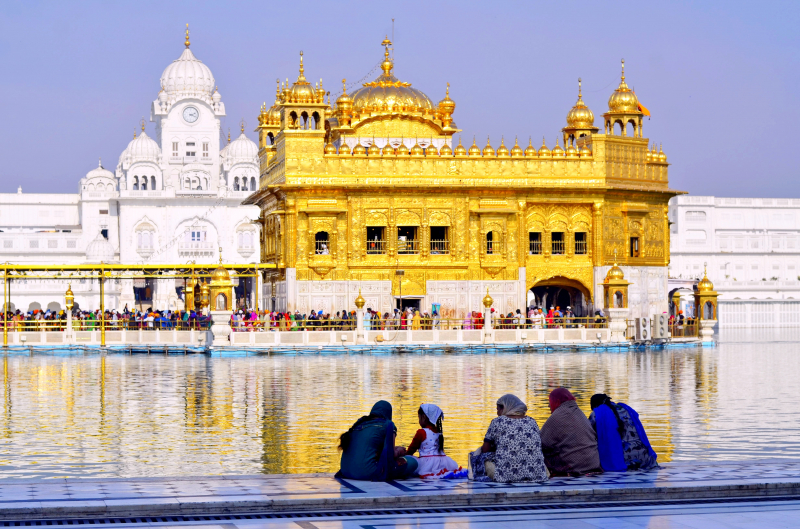
Image by Laurentiu Morariu on Unsplash -
Guru Gobind Singh, the tenth and last living Sikh Guru, gathered his disciples in the Punjab town of Anandpur in 1699; nearly 80,000 attended. Guru Gobind Singh, according to legend, stood in front of his people, brandished a naked sword, and demanded a head. He called again and again, until five Sikhs volunteered. These five people come from various locations in India and from various castes.
Guru Gobind Singh conferred a new discipline, a creed, on these five, and later on many others, on that momentous day. The Guru introduced these five into the new Khalsa order, and they, in turn, initiated him in a dramatic and momentous gesture. On that day, he bestowed upon the Sikhs a distinct identity comprised of five articles of faith:
- Unshorn hair is regarded as a gift from God and Guru, as well as a symbol of Sikh identity.
- A hair comb of a small size
- A steel bracelet that represents a reality with no beginning and no end, as well as a Sikh's dedication to the values of his faith, in the same way that a wedding ring may express fidelity and identity,
- A sword symbolic of resolve and commitment to justice
- Knee-length breeches in keeping with a Sikh's disciplined way of life
Turbans are an essential component of Sikh identity. Turbans are worn by both men and women. Sikhs see their turbans, like their articles of faith, as gifts given by their adored gurus, and their meaning is extremely personal. Wearing a turban typically shows one's social position in South Asian culture; turbans were previously worn by kings and rulers. The turban was embraced by Sikh gurus in part to remind Sikhs that they are all sovereign, royal, and ultimately equal.
Sikh men use turbans to conceal their long hair, while smaller boys wear their uncut hair in a topknot covered by a piece of fabric. Meanwhile, Sikh women cover their hair with a long scarf called a dupatta or chunni, or they can choose to wear turbans. Wearing a turban expresses a Sikh's public commitment to upholding the tradition's principles and ethics, such as service, compassion, and honesty.
Along with the physical markers stated above, Guru Gobind Singh went a step further in differentiating Sikhs. In Indian society, a person's name shows his or her caste and social rank. Guru Gobind Singh liberated Sikhs from the rigid caste system by requiring all Sikh males to take the surname "Singh," which means "lion," and all Sikh females to take the surname "Kaur," which means "princess," abandoning their caste status.
Every year, Sikhs around the world commemorate and celebrate the historic events of Vaisakhi 1699, when Guru Gobind Singh decreed the foundation of the Khalsa and shaped the nation of Sikhs.
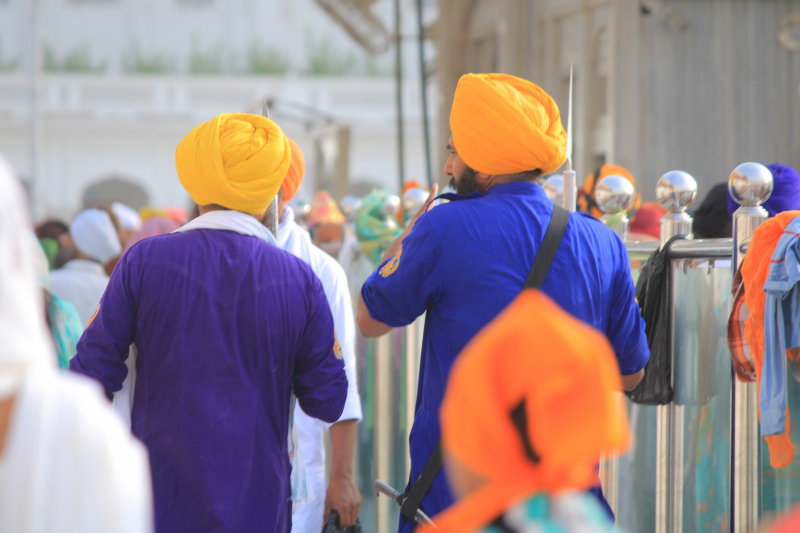
Image by Sarbjit Singh on Unsplash 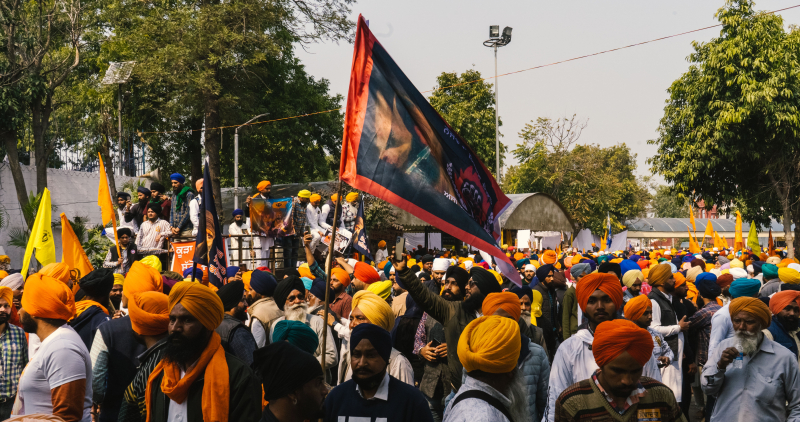
Image by Surinder Pal Singh on Unsplash -
Guru Nanak (1469–1538) was the founder of Sikhism and the first of the human Sikh gurus. Guru Nanak was attracted by religion even as a child, and his ambition to discover the secrets of life finally prompted him to abandon home. He traveled around India in the style of Hindu saints. Guru Nanak met Kabir (1441–1518), a saint respected by both Hindus and Muslims, during this time period. He conducted four big voyages, known as Udasis, that spanned thousands of kilometers.
Guru Nanak picked his disciple Bhai Lehna as his successor to the guruship rather than his son in 1538. Bhai Lehna was called Guru Angad and became the second guru of Sikhism. He carried on the task begun by Guru Nanak. At the age of 73, Guru Amar Das became the third Sikh guru in 1552.
During Guru Amar Das's guruship, Goindwal became a major Sikhism center. He persisted in preaching the principle of gender equality, the ban on Sati, and the practice of Langar. In 1567, Emperor Akbar sat down at Langar with the common and poor people of Punjab.
To oversee the religion's rapid expansion, Guru Amar Das also taught 140 apostles, 52 of whom were women. He appointed his son-in-law, Jetha, as the fourth Sikh Guru before his death in 1574 at the age of 95. Jetha took on the role of Guru Ram Das and worked hard to fulfill his responsibilities as the new guru. He is responsible for the establishment of Ramdaspur, which was later renamed Amritsar.
Guru Arjan, the youngest son of the fourth Guru, became the fifth Guru of the Sikhs in 1581. He was in charge of the construction of the Golden Temple as well as the Sikh sacred scripture and his personal insertion of over 2,000 hymns to the Guru Granth Sahib.
In 1604, he established the Adi Granth as the Holy Book of Sikhs for the first time. In 1606, he was imprisoned and fined an exorbitant sum by the newly established Mughal Emperor Jahangir, which he refused to pay. His disciples and a highly regarded friend, Sufi Sant Hazrat Mian Mir, attempted to intervene on his behalf, but believing he had done nothing to justify the fine, he told them he did not want anyone interfering with Waheguru's workings.
He was also urged to change some of the former Gurus' words that he had collected in the Adi Granth, which he refused. He was severely tormented before being permitted to bathe in a nearby river. His followers and admirers watched as he proceeded to the river's edge on his terribly burned and blistered feet, waded in, and then vanished beneath the water, never to be seen again, becoming the Sikhs first martyr.
Guru Hargobind was the sixth guru of the Sikhs. He carried two swords, one for spiritual and one for temporal (worldly) reasons. From that moment forward, the Sikhs became a military force with a trained combat force to protect their freedom.
Guru Har Rai was appointed Guru in 1644, followed by Guru Har Krishan, the boy Guru, in 1661. Guru Teg Bahadur became Guru in 1665 and led the Sikhs until 1675, when he sacrificed his life in defense of Kashmiri Hindus who had gone to him for assistance.
In 1675, Aurangzeb ordered the public execution of Guru Tegh Bahadur, the ninth Sikh Guru. According to Sikh mythology, Guru Tegh Bahadur sacrificed himself to preserve Hindus after Kashmiri pandits sought his assistance after the Emperor sentenced them to death for refusing to convert to Islam. This was a watershed moment in the history of Sikhism. His successor, Guru Gobind Singh, the last of the human Sikh Gurus, militarized his disciples even more.
After the treachery of his neighboring hill chieftains (Katri Rajputs, who he had expected to join him in expelling or at least putting an end to Mughal tyranny and forced conversions of Hindus), who took the side of the Mughals and tricked him and the Sikhs, under a guarantee of safe passage, into abandoning Anandpur, many of his Sikhs, including his four sons and his mother, Gobind Singh, reached safety.
Shortly before his death, Guru Gobind Singh directed that the Sikh Holy Scripture, Guru Granth Sahib, replace the line of human Gurus and become the spiritual authority for the Sikhs, while the Khalsa Panth, or the Sikhs themselves, would be the temporal authority.
The Guru Granth Sahib is unique among sacred books in that it is written in Gurmukhi script yet contains multiple languages, including Punjabi, Hindi-Urdu, Sanskrit, Bhojpuri, and Persian. Sikhs consider the Guru Granth Sahib to be the final and only living guru.
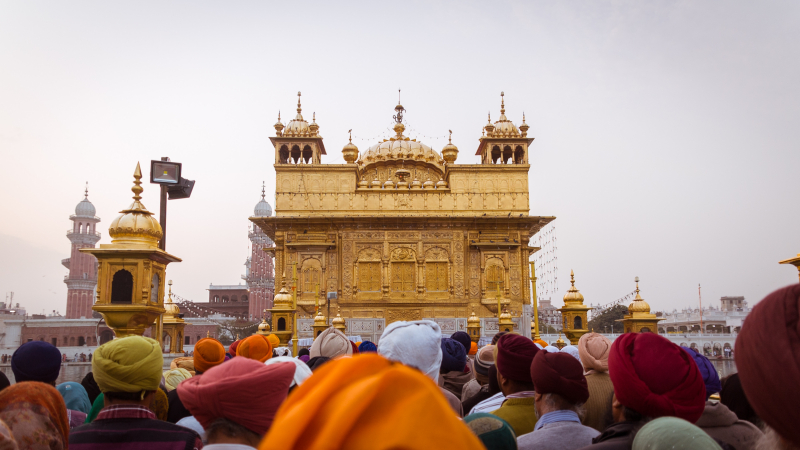
Image by Kit Suman on Unsplash 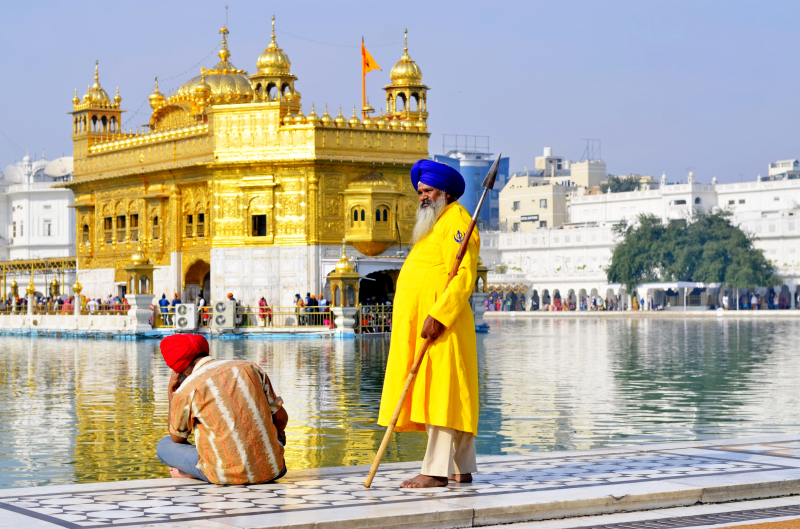
Image by Laurentiu Morariu on Unsplash -
The Guru Granth Sahib is a sacred scripture considered by Sikhs to be their eleventh and last Guru. Sikhism was influenced by reform movements in Hinduism (such as Bhakti, Monism, Vedic metaphysics, the guru ideal, and bhajans) as well as Sufi Islam. It departs from some Hindu and Islamic social customs and structures (such as the caste system and purdah, respectively).
Sikh philosophy is distinguished by rationality, comprehensiveness, and a "no frills" attitude toward spiritual and material issues. Its theology is characterized by simplicity. In Sikh ethics, there is no conflict between an individual's obligation to oneself and his or her duty to society.
The Guru Granth Sahib is regarded in the highest regard by the Sikhs and is treated as the Eternal Guru, as taught by Guru Gobind Singh. It is perhaps the only scripture of its sort that includes not just the teachings of its own religious founders but also writings from people of other faiths.
The Guru Granth Sahib includes the writings of saints such as Kabir, Namdev, Ravidas, Sheikh Farid, Trilochan, Dhanna, Beni, Sheikh Bhikan, Jaidev, Surdas, Parmanad, Pipa, and Ramanand, in addition to the Banis of the Gurus.
For Sikhs, the Guru Granth Sahib is the ultimate spiritual authority. It covers the teachings and devotional compositions authored and recorded by the Sikh Gurus, as well as some modern Hindu and Muslim saints. The Guru Granth Sahib is at the center of Sikh religion, and its presence adds dignity to the Sikh place of worship, the Gurdwara.
The Granth is the focal point of a Sikh place of worship known as a gurdwara. During the day, the Holy Scripture is put on the dominating platform in the gurdwara's main hall. It is placed with great dignity and respect on a throne made of gorgeous and colorful fabric.
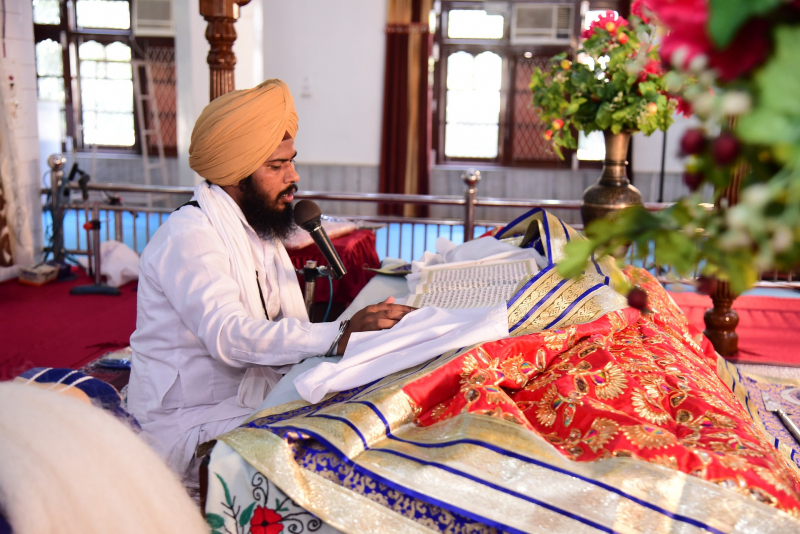
Image by Mr.A Photo Studio on Pixabay 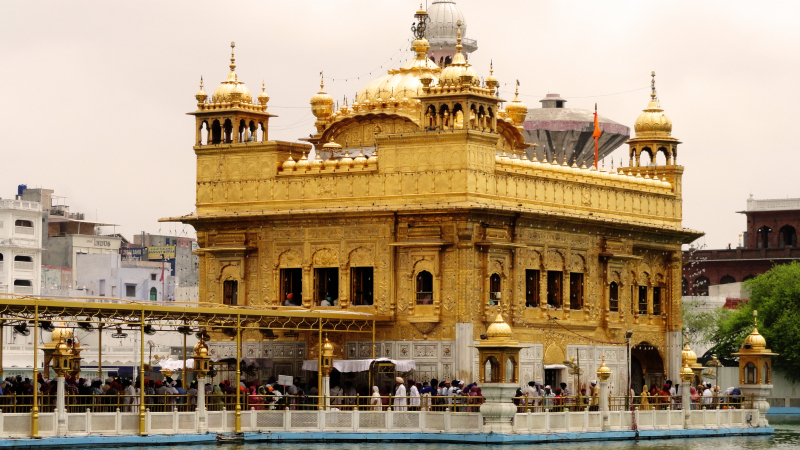
Image by NARINDER PAL on Unsplash -
Sikhs worship in a structure called a gurdwara, which literally means "the door that leads to the guru". Every Gurdwara holds a copy of the Sikh holy book, the Guru Granth Sahib. In fact, the presence of the Guru Granth Sahib is what gives the gurdwara its holy status; hence, any building that houses the Guru Granth Sahib is considered a gurdwara.
The Guru Granth Sahib is always kept in the main hall of the gurdwara (the diwan hall) and is regarded with reverence and respect. When not in use, it is placed beneath a canopy on an elevated platform and is always covered with cloth. At the end of the day, it is transferred to a separate room known as the Sach Khand, where it is kept overnight.
Before entering a gurdwara, Sikhs remove their shoes, wash their hands, and cover their heads. They then move towards the Guru Granth Sahib and kneel and bow in front of it, their foreheads touching the floor. They may also provide a food or monetary offering.
- In a gurdwara, there are no images, statues, bells, or candles. This is due to Sikhs' belief in a single God who does not have a bodily form.
- There is no anticipation that Sikhs will attend the gurdwara. There is no specific holy day for the Sikh religion; however, Sikhs in the UK choose to go once a week, on a Sunday, to coincide with the working week. Many Sikhs in India attend the gurdwara before going to work.
- There are four doors in each gurdwara: the Door of Livelihood, the Door of Peace, the Door of Learning, and the Door of Grace. This is to demonstrate that everyone is welcome.
- Gurdwaras are community centers that serve free meals from a "langar," or kitchen, as well as a space for religious events and for youngsters to learn about Sikh customs and traditions. This dish is vegetarian in order to meet the nutritional needs of everyone.
- There are no cushions or chairs in a gurdwara; everyone sits on the floor.
- There are no ordained priests in the Sikh religion, and any Sikh can lead services and read from the Scriptures.
- Daily morning services begin with hymn singing and are followed by a sermon and prayers. Following the service, food is served.
- The Sikh flag is flown outside Gurdwaras. The Sikh flag, known as the Nisham Sahib, is a triangular orange or yellow flag with the Sikh emblem, a Khanda (a double-edged sword, circle, and two crossed kirpans or swords) in blue.
- In a gurdwara, a light is always left on to symbolize that the guru's light is available to anyone at any time.
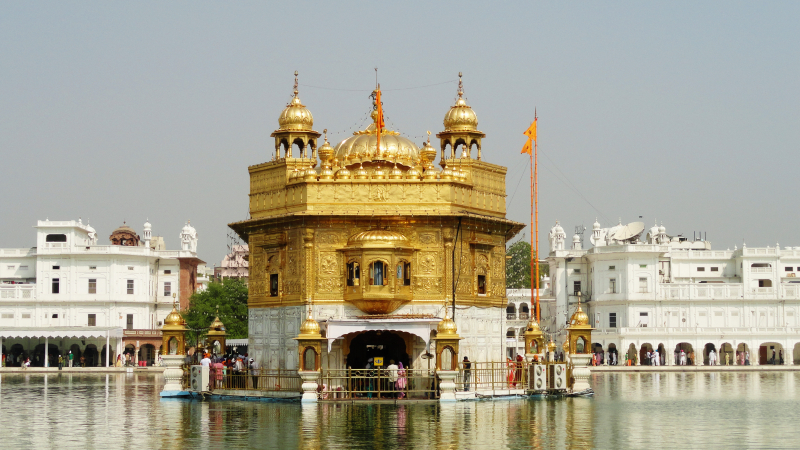
Image by NARINDER PAL on Unsplash 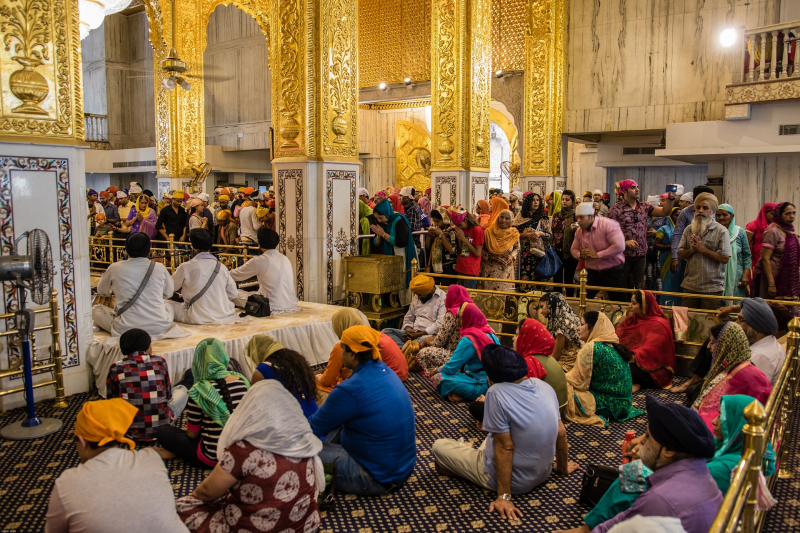
Image by David Mz on Pixabay -
Sikh Marriage:
- The Sikh marriage ritual is known as Anand Karaj, which means "joyful union".
- To be allowed to participate in this wedding ceremony, both spouses must adhere to the Sikh faith.
- Child marriage is forbidden, and Sikh boys and girls are free to meet without the influence of their parents. Assisted weddings do occur, though, and the son or daughter has the option of accepting the mate chosen for them.
- The wedding ceremony is held in front of a copy of the Guru Granth Sahib. The husband reads the verses and walks his wife around the holy book four times.
- Divorce has traditionally not been an option for Sikhs because the gurus did not divorce, but modern attitudes about instances when the marriage has permanently broken down imply that Sikhs may go to the community and ask for permission to divorce and remarry.
Sikh Death:
- Sikhs believe that death is a natural process and an opportunity for the soul to be reunited with God.
- The Sikh burial ritual is known as "Antam Sanskaar" and it focuses on celebrating the conclusion of life rather than mourning the person's death.
- Sikhs are cremated, and their ashes are either buried or strewn across a body of flowing water, such as a river or sea.
- Sikhs believe in reincarnation, or the idea that people's souls go through a variety of living forms and life cycles before becoming pure and able to be reunited with God.
Sikh Food:
- The teachings of Sikh gurus imply a preference for a diet of basic foods and that people should eat in moderation. Sikhs can opt to be vegetarians or consume meat.
- The Landar, the Gurdwara's community kitchen, only provides vegetarian food in order to be welcoming to everybody, regardless of faith or inclination.
- Traditional Sikh cuisine includes roti and pulka. Wholemeal flour is used to make these flatbreads.
- Many Sikh recipes, whether meat or vegetarian, incorporate sabzi (cooked veggies) and daal (cooked lentils).
Although the offering of a sweet dish, or "pudding", after a meal is not regarded as vital, Sweet rice pudding (kheer) and milk- and sugar-based barfi are popular Sikh treats. Pakoras, fried spicy balls of potatoes and onions, and samosas, triangular-shaped pastries with varied fillings, are two savory appetizers.
Sikh Festivals:
A Sikh can worship at any time of day or night, but the most common periods are before sunrise and sunset, as well as before retiring to bed at night. A Sikh, in general, meditates ("simran") on the Name of God by chanting His Name (the Magnificent Lord, Waheguru) even while working.
Every year, there are a number of Sikh festivals known as Gurpurbs, which are related to the birth and death anniversaries of the Gurus. These are a few examples:
- The birth dates of ten Sikh Gurus The birthdays of Guru Nanak Dev Ji (the first Guru) and Guru Gobind Singh Ji (the tenth Guru), as well as the martyrdom days of the fifth and ninth gurus, are especially significant. On certain occasions, Sikhs follow the "Akhand Path," which involves reading the Granth Sahib continuously for 48 hours.
- The five Sikhs baptized by the tenth Guru, Gobind Singh, are commemorated. This is known as Khalsa Advent Day ("Baisakhi"). This is also a noteworthy day because it symbolizes the beginning of the wheat harvesting season and Sikh New Year's Day.
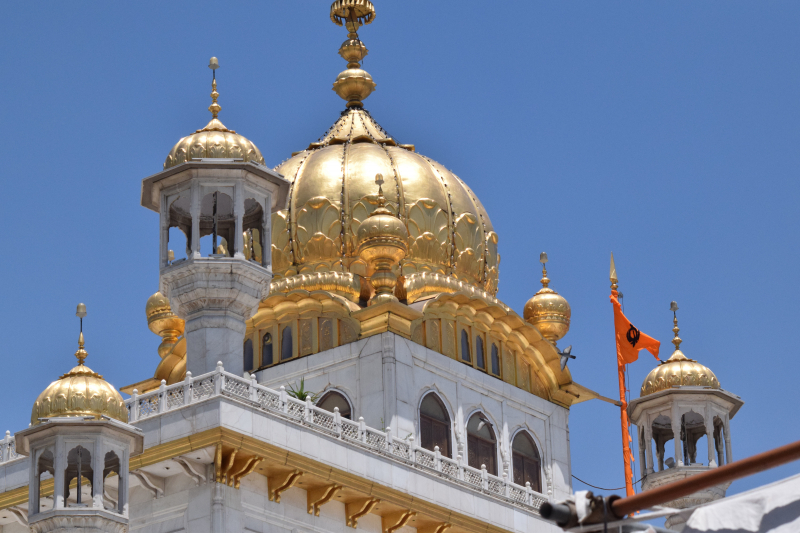
Image by Sagar Sharma on Unsplash 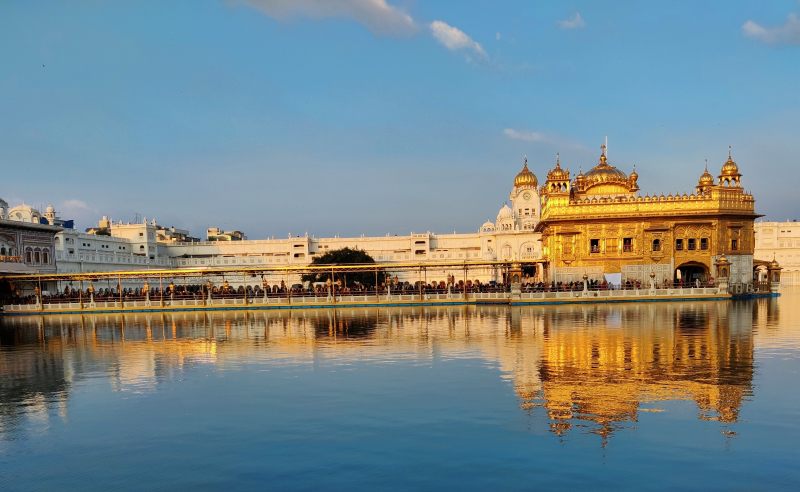
Image by Simarpreet Kaur on Unsplash











